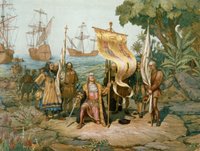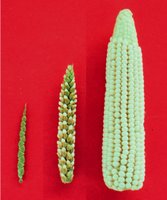 Yesterday's Columbus day post about the book , 1491: New Revelations of the Americas Before Columbus by Charles Mann reminds me that "fixing" the destruction by disease of the New World civilizations that occurred upon their discovery is a theme of science fiction writers as well. If you haven't read the books and short stories below, I recommend them, and caution you that there are spoilers in this post.
Yesterday's Columbus day post about the book , 1491: New Revelations of the Americas Before Columbus by Charles Mann reminds me that "fixing" the destruction by disease of the New World civilizations that occurred upon their discovery is a theme of science fiction writers as well. If you haven't read the books and short stories below, I recommend them, and caution you that there are spoilers in this post.The question before us is how would you prevent the destruction of the civilization in the Americas when the Europeans arrive in 1492.
The fictional scientists in Orson Scott Card's Pastwatch: The Redemption of Christopher Columbus find a way to view the past and use it not just for study, but potentially for alteration of mistakes. The biggest of which is the discovery of the new World by Christopher Columbus and the subsequent destruction by disease of the indigenous civilizations that followed.
These scientists are meddlers, so they intentionally infect the New World people and Old World people of Columbus' time with a more innocuous form of virus that conveys immunity to smallpox after only a short mild sickness. Fix disease, check. Then they convince Columbus and his crew to treat the natives they meet more kindly(mostly because they are not dead from epidemics). Stop atrocities, check. There is also some social engineering of the Old and new World religions, you can read the book for more. (The book also has an especially good chapter on a theory of Noah's flood, and the Tower of Babel located in a different place than you would think.)
 This theme is evocative of a recent story in Futureshocks edited by Lou Anders. The story, "The Teosinte War" by Paul Melko addresses the same issues in Pastwatch: how to get the Native Americans in the New World to the same technological level as the Old World before Columbus discovers America and wrecks everything.
This theme is evocative of a recent story in Futureshocks edited by Lou Anders. The story, "The Teosinte War" by Paul Melko addresses the same issues in Pastwatch: how to get the Native Americans in the New World to the same technological level as the Old World before Columbus discovers America and wrecks everything.The author appears to have read Guns, Germs and Steel by Jared Diamond, who contends that the reason that the Eurasian civilizations rose to technological civilization faster than the rest of the world and went on to colonize the Americas was because of the suite of domesticated plants and animals available to them that the indigenous people of the Americas, and Australians did not have. These tools led to the development of large cities and virulent germs (and immunity to them) bred through the close association of people and animals.
Imagine what would happen if both the Old World and the New World had populous complicated civilizations with large cities and different germs...
Melko's story is not exactly time travel, the science in the story suggests that intervention in the past breaks off an alternate history that continues along as new path. The author has his characters deliver modern maize and horses to the Americas long before the first Europeans arrive, read the story for the results of the experiment.
(teosinte and maize picture via Univ of Wisconsin Doebley Lab)
tags: Indians, Native Americans, 1491, time travel, science fiction, alternate history, Columbus
1 comment:
Dear Mr. Hypocrite,
You are entirely correct on the source of my story. After reading Diamond's book, my brain was so full, I had to write a story about his ideas. I kept coming back to the thought of how he could prove his theories; there's just no lab large enough.
Thanks,
Paul
Post a Comment